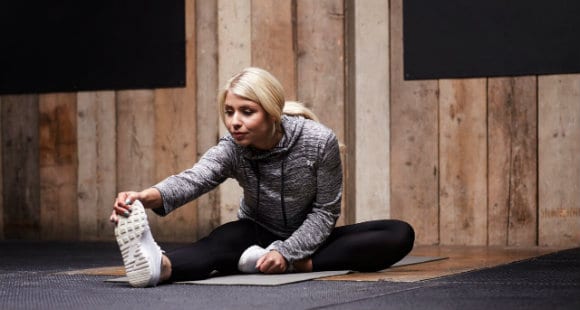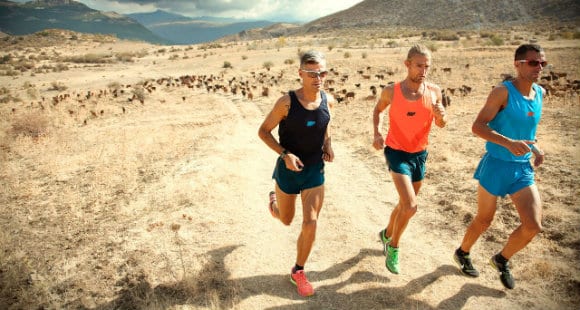By the healthiergang writer , student in Medicine and Surgery.
Muscle warm up
Start watching a movie in the middle of the action, when our hero he is clashing with the bad guy, it is certainly not what we expect when we enter the hall at the cinema. The same discourse should also be applied in the room (this time for training) when we are about to perform the workout.
Good exercise should always be preceded by appropriate heating and global muscle mass. The same goes for the cool down, which allows us to gradually move from intense activity to one resting phase, eliminating the accumulated waste.
Body temperature
The warm-up, physiologically, has the task of increasing the body temperature muscles and increase blood flow to them, in order to prepare the athlete for the upcoming activity. This pre-conditioning also involves the joints and the nerve sphere (by increasing reflexes and nerve impulses to the muscle).

THErise in temperature allows greater muscle elasticity, resistance to tearing and lacerations, greater extensibility of connective tissue and soft tissues and an increase in the metabolic rate (production of ATP) which increases performance (strength, power and reactivity).
Articulations
From the point of view articular, the production of synovial fluid, which lubricates the joints, so that the movements are fluid and linear, decreasing the friction between the ends of the joints (it works just like an oil that lubricates the gears of an engine).
Accident protection
Recently there has also been a focus on the benefits of the warm-up in buffering the ion production H + in the muscle contractile environment so that the performance, especially of an anaerobic lactacid nature, is better (comparative study on passive vs active warm-up). Do not forget the proven accident protection which are much more frequent in subjects who begin their training "cold", precisely because the muscle is not ready to undergo intense stress.
The guidelines recommend a proportional heating the activity to be performed (from 5 to 20 minutes) that does not bring the athlete to exhaustion and therefore so as not to weigh on performance in competition or in training.
Non-specific heating
We generally start with a non-specific heating, which involves large muscle masses, resulting in an increase in body temperature (jogging 5-10 min with simultaneous circumduction of the arms); some authors like Boyle recommend one more first passive stretching with foam roller of flexors and extensors of the lower limbs, hips and back muscles, followed by static stretching and then a few minutes of running.
For those who want more precise parameters, a good warm up should hang around at 50-60% of the HRMax for trained subjects and around the 70-80% for professionals. In addition, some mobility exercises in the main joints (ankles, hips, scapulo-humeral) and core activation can be included.
Specific heating
The second step is the specific heating where the athlete plays the gesture he will perform in training: an example could be 2 sets of 5-6 repetitions at 40% of 1 RM bench press before doing a chest workout, 2 sets of 8-10 repetitions of bodyweight squats or a ten lunges moving on the day dedicated to the lower limbs and a few sets of the Lat machine or rowing machine (always with little weight) before training the lats.
Il benefit of this practice is a increased blood circulation and sectorial temperature as well as a better psycho-motor preparation.

For a specific heating for the medium and long distance travel start as above with some specific warm-up followed by soft run (with the aim of activating the energy systems) for about ten minutes and some extension, that is to walk a few meters (between 80 and 100) at a more sustained pace, interspersed with a gentle jog, up to 3-4 minutes of work effective (making from 4 to 8 depending on the athletic preparation); the stretch is nothing more than a stretching in motion, which in addition to preparing the muscles also prepares the joints for the upcoming activity.
Pre-workout boosts are also excellent adjuvants, both with and without stimulants.
Lo Stretching
Small parenthesis regarding active or passive stretching before training: many studies have focused on this aspect by comparing the benefits which can result from an elongation of the muscle and tissues against the downsides of a partial inhibition of the stretch reflex involving the neuromuscular spindles (which practically should protect us from tears and injuries due to excessive stretching).
I personally perform a rolling session lasting 5 minutes followed by both static and dynamic stretching, noting benefits in range of motion both before and before strength training circuit training; the final decision is always up to you and the wealth of knowledge and experience you have acquired.
Regeneration
Another essential point is the cool down. We can understand it as a reverse heating, where we gradually restore the pre-workout values: heart rate, body temperature, blood catecholamine levels. This part of the training is also significantly snubbed; almost everyone rushes into the shower after a session in the gym, it's a common mistake.
The practices adopted are almost mirroring the heating phase, with mild aerobic activity for 5-10 minutes to remove lactate formed in the muscles, accelerating the heartbeat and stimulating the venous return from the ends; after a purely anaerobic work in the weight room, the heart rate in the cool-down can reach up to 70% of the HRMax.
The real purpose of this phase is gain some lost flexibility during the activity, inserting in the end a classic stretching routine or a massage done with the foam roller on the trained areas.
Now I just have to wish you a good workout !!


























